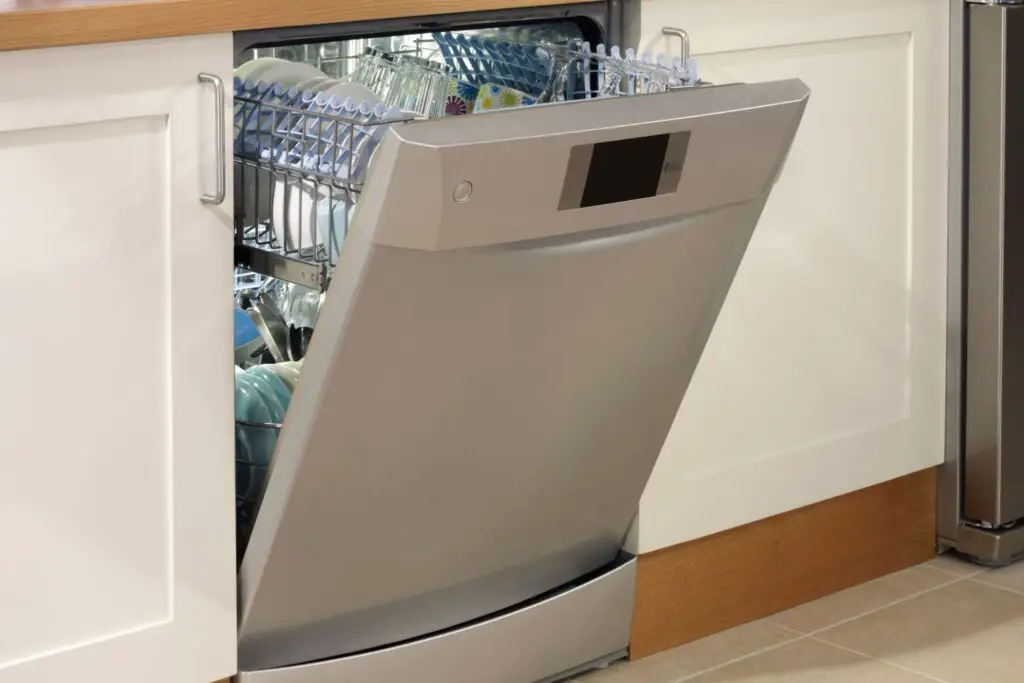Originally Created on: March 3, 2023 @ 11:18 am
If you own or plan to own a dishwasher, you may have asked yourself a number of questions. You may have probably wondered, “How to Kasher a dishwasher?”.
In this blog post, we get to answer that and even dive further into this question. Read on.
Also Read: Is It Bad To Leave Clean Dishes In The Dishwasher? [The SHOCKING Truth]
Table of Content
How To Kasher A Dishwasher?
Kashering a dishwasher is an important process for those who observe Jewish dietary laws, also known as kashrut or kosher. Kashering involves purging the dishwasher of any non-kosher residues and making it fit for use with kosher utensils and dishes.
This process is necessary when someone buys a new dishwasher or if their dishwasher has been used for non-kosher food items. Properly kashering a dishwasher involves several steps, which can seem daunting at first, but it is not overly complicated.
In this article, we will provide a step-by-step guide on how to kasher a dishwasher, so you can maintain a kosher kitchen with ease.
Can You Kasher A Dishwasher?

Yes, it is possible to kasher a dishwasher, and many people who observe Jewish dietary laws do so regularly. The process of kashering a dishwasher involves purging it of any non-kosher residues and making it fit for use with kosher utensils and dishes.
It is necessary to kasher a dishwasher when someone buys a new dishwasher or if their dishwasher has been used for non-kosher food items. If a dishwasher is not kashered, it cannot be used to wash kosher utensils and dishes, and the food prepared in them would be considered non-kosher.
Kashering a dishwasher involves several steps that must be followed carefully to ensure that the dishwasher is properly kashered.
First, the dishwasher must be thoroughly cleaned to remove any non-kosher residues. This can be done by running the dishwasher empty on the hottest cycle possible with a cleaning solution.
Once the dishwasher is clean, it must be kashered by running it through a cycle with boiling water. This process can be done by adding boiling water to the dishwasher or by using the dishwasher’s high-temperature cycle.
It is important to note that not all dishwashers can be kashered. Some dishwashers have parts that cannot be kashered, such as plastic or rubber components.
In such cases, it is recommended to consult with a rabbi or a professional kashering service to determine whether the dishwasher can be kashered.
Additionally, it is important to follow the specific kashering guidelines that apply to one’s community or rabbinic authority, as different communities may have different practices and customs.
How To Kasher A Dishwasher?
To kasher a dishwasher, there are several steps that must be followed carefully.
First, the dishwasher must be thoroughly cleaned to remove any non-kosher residues. This can be done by running the dishwasher empty on the hottest cycle possible with a cleaning solution.
One can use a commercial dishwasher cleaner or a homemade solution of equal parts vinegar and water or baking soda and water.
It is important to remove any food particles or stains from the dishwasher, especially in the corners and crevices.
Once the dishwasher is clean, it must be kashered by running it through a cycle with boiling water. This process can be done by adding boiling water to the dishwasher or by using the dishwasher’s high-temperature cycle.
If one is using the high-temperature cycle, it should be set to the hottest setting possible. One can add boiling water to the dishwasher by boiling a large pot of water and pouring it into the dishwasher until it reaches the level of the heating element.
It is essential to be careful while adding boiling water to avoid getting scalded.
The dishwasher should be run on this high-temperature cycle or with boiling water for a full cycle to ensure that the entire dishwasher is exposed to heat.
It is important to note that not all dishwashers can be kashered, especially those with plastic or rubber components that cannot withstand high temperatures. One should check with a rabbi or a professional kashering service before attempting to kasher a dishwasher.
Additionally, one should consult their community’s or rabbinic authority’s specific kashering guidelines, as different communities may have different practices and customs.
Can You Kasher Stainless Steel Dishwasher?

Yes, it is possible to kasher a stainless-steel dishwasher, but it is essential to follow the proper guidelines carefully. Stainless steel dishwashers are typically considered kasherable since they can withstand high temperatures.
However, it is essential to ensure that all the parts of the dishwasher, including the racks and the spray arms, are made of stainless steel or another kasherable material.
Non-kasherable parts, such as plastic or rubber components, cannot be kashered and must be replaced before kashering the dishwasher.
To kasher a stainless steel dishwasher, one should first thoroughly clean it to remove any non-kosher residues. This can be done by running the dishwasher empty on the hottest cycle possible with a cleaning solution.
Once the dishwasher is clean, it can be kashered by running it through a cycle with boiling water. This process can be done by adding boiling water to the dishwasher or by using the dishwasher’s high-temperature cycle.
The dishwasher should be run on this high-temperature cycle or with boiling water for a full cycle to ensure the entire dishwasher is exposed to heat.
It is important to note that different communities may have other practices and customs regarding kashering a stainless-steel dishwasher.
Some communities may require additional steps, such as covering the dishwasher’s racks with aluminum foil or adding boiling water to the dishwasher’s bottom before running the high-temperature cycle.
How To Kasher A Used Dishwasher?

Kashering a used dishwasher requires extra care and attention to remove all non-kosher residues. The first step is thoroughly cleaning the dishwasher to remove any food particles, stains, or other residues.
This can be done by running the dishwasher empty on the hottest cycle possible with a cleaning solution. One can use a commercial dishwasher cleaner, a homemade solution of equal parts vinegar and water, or baking soda and water.
Removing any remaining residue, especially in the corners and crevices, is essential.
Once the dishwasher is clean, it must be kashered by running it through a cycle with boiling water. This process can be done by adding boiling water to the dishwasher or by using the dishwasher’s high-temperature cycle.
If one is using the high-temperature cycle, it should be set to the hottest setting possible. One can add boiling water to the dishwasher by boiling a large pot of water and pouring it into the dishwasher until it reaches the level of the heating element.
It is important to note that kashering a used dishwasher may require additional steps, depending on its previous use. If the dishwasher was previously used for non-kosher dishes, replace the dishwasher’s racks or other parts that cannot be kashered.
Conclusion
In conclusion, kashering a dishwasher is essential for those who observe kosher dietary laws.
Whether kashering a new or used dishwasher, it is vital to follow the proper guidelines carefully to ensure that the dishwasher is appropriately cleansed and kashered.
Stainless steel dishwashers are typically considered kasherable, but it is crucial to ensure that all the dishwasher’s parts, including the racks and spray arms, are made of stainless steel or another kasherable material.
Additionally, kashering a used dishwasher may require extra care to remove any non-kosher residues and replace any non-kasherable parts.
Consulting with a rabbi or a professional kashering service can help ensure that all the proper guidelines are followed when kashering a dishwasher.
By following the proper kashering procedures, one can ensure that their dishwasher is kosher and suitable for use in preparing kosher food.

![How To Kasher A Dishwasher? [Tips + COMPLETE Guide]](https://mykitchenapex.com/wp-content/uploads/2023/03/How-To-Kasher-A-Dishwasher-Tips-COMPLETE-Guide.jpg)